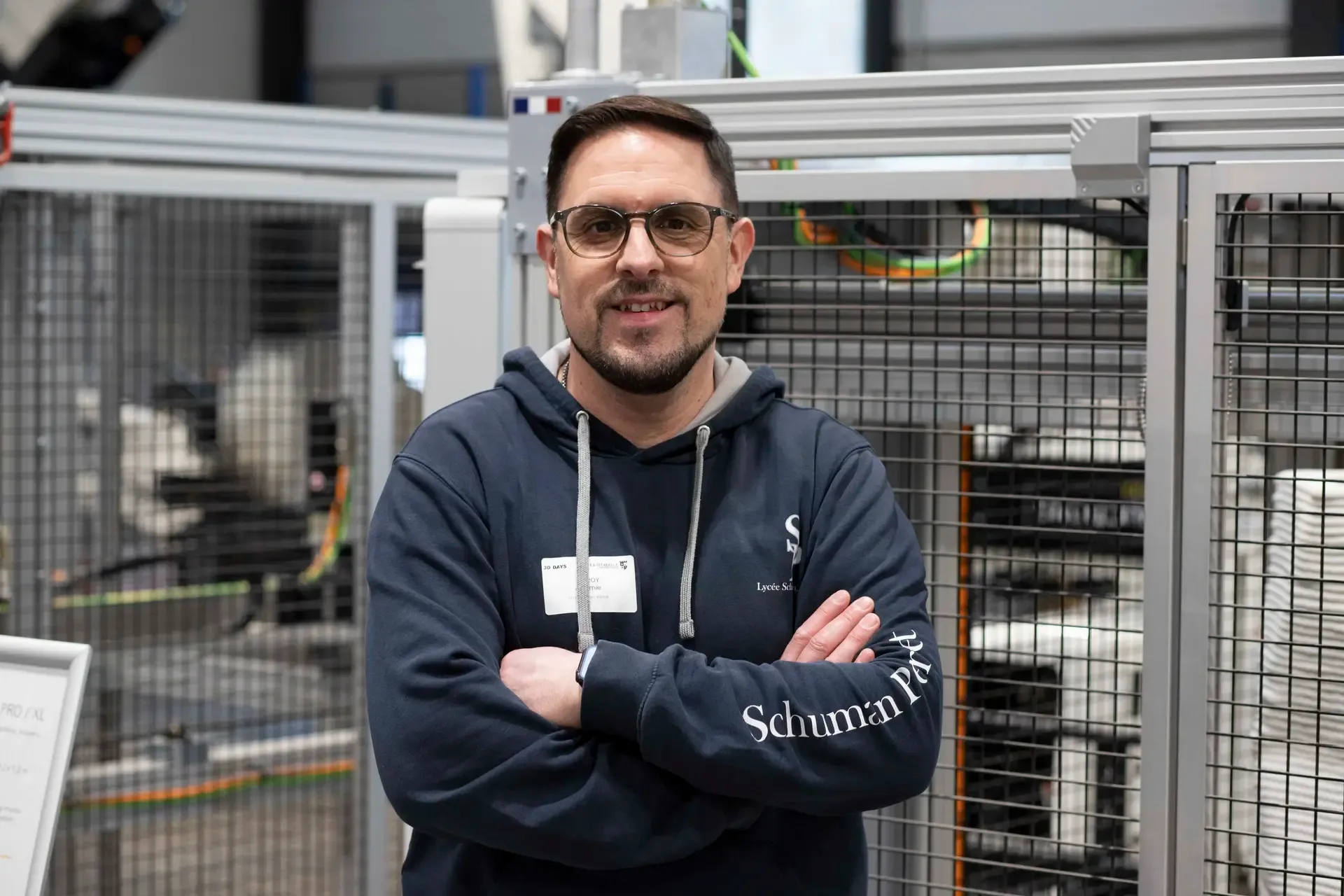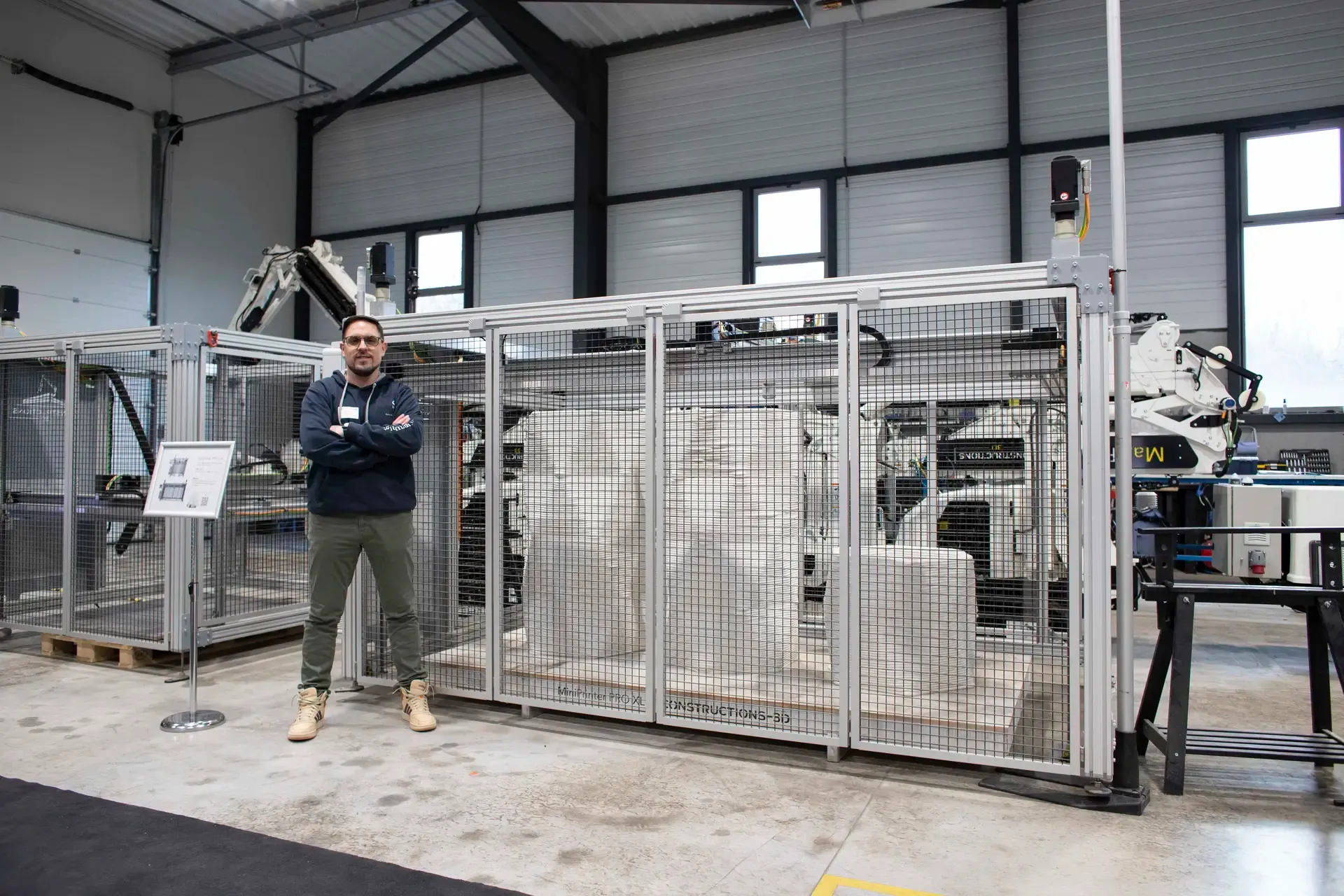How is the MiniPrinter PRO an advantage for the education sector in construction?
Last March, Jeremie Moroy, a teacher at Lycée Schuman Perret, was invited to the Citadelle des Savoir-Faire during the 3D Days to share his feedback on the MiniPrinter PRO. How has the 3D concrete printer been adopted and used by students in their training? What impacts has it had? Does 3D printing have a future in education? Let’s explore together the future prospects of this new educational method and innovative approach to construction.
Published on 14 May 2025

Written by Jessica Maciejewski

3D Concrete Printing: When Education Takes on a New Dimension in Construction
Mr. Moroy, a civil engineering teacher and coordinator of innovative training in structural work at Lycée Schuman Perret in Le Havre, Normandy, shared with us his daily use of the MiniPrinter PRO, particularly in teaching civil engineering to his students. He highlighted several interesting aspects of this new educational approach.
His flagship project? Creating a masterpiece connected to his apprentices’ professional curriculum.
But why integrate 3D concrete printing into his program? For Mr. Moroy, it is important to show his students the latest innovations and emphasize the need to train them in these advanced techniques to avoid potential delays in their learning.
Although the MiniPrinter PRO quickly found its place in his educational project, it initially required time to master and adopt. Mr. Moroy first discovered the machine during a demonstration at a Parisian high school. It was a clear revelation.
Convinced by the process—both for its ease of use and its significant low carbon footprint—Mr. Moroy was certain it needed to be integrated into the training program.
Despite being relatively user-friendly, the 3D printing machine remains a new tool that requires mastery.
His main challenge is the time he can dedicate to it. Indeed, it takes time to fully understand its operation and nuances. Not being a trainer in mechanics or industry, he is self-learning through hands-on practice as he uses the machine.

An Educational Tool That Stimulates Creativity and Innovation
After a few weeks of hands-on experience with the MiniPrinter PRO, the impact on learning has been significant, opening up many possibilities for its use. The printer is especially utilized for students’ practical work—often for lost formworks but also for façade elements like columns and other structural components.
The machine offers real educational benefits. The teacher emphasizes that imagination knows no bounds. It encourages apprentices to explore complementary new technologies such as digital models, which are essential in today’s processes.
Beyond fostering imagination and creativity, there is genuine enthusiasm around the machine. Enthralled by new technology, this generation of students is amazed to see a creation emerge from a computer and a printer like the MiniPrinter PRO. While they are accustomed to new technologies, these students in structural training are used to creating with their hands. Seeing a machine do it for them fascinates them.
Mr. Moroy shares that they have produced: “formworks for columns that will remain visible, tests of voussoirs for a post-tensioned bridge, and logos for lost formworks.” The list of projects continues to grow, and the impact on this new generation of students is tremendous.After a few weeks of hands-on experience with the MiniPrinter PRO, the impact on learning has been significant, opening up many possibilities for its use. The printer is especially utilized for students’ practical work—often for lost formworks but also for façade elements like columns and other structural components.
The machine offers real educational benefits. The teacher emphasizes that imagination knows no bounds. It encourages apprentices to explore complementary new technologies such as digital models, which are essential in today’s processes.
Beyond fostering imagination and creativity, there is genuine enthusiasm around the machine. Enthralled by new technology, this generation of students is amazed to see a creation emerge from a computer and a printer like the MiniPrinter PRO. While they are accustomed to new technologies, these students in structural training are used to creating with their hands. Seeing a machine do it for them fascinates them.
Mr. Moroy shares that they have produced: “formworks for columns that will remain visible, tests of voussoirs for a post-tensioned bridge, and logos for lost formworks.” The list of projects continues to grow, and the impact on this new generation of students is tremendous.
Training Tomorrow’s Builders Today
Thanks to its ease of use and the vast possibilities offered by 3D concrete printing—especially in shaping urban furniture—the positive impact of this machine on today’s education and training is undeniable. Although its application can be complex with large groups of students and is better suited to smaller projects, this method offers significant advantages.
According to Mr. Moroy, it is crucial to prepare and train young people who show a strong interest in these technologies now, to avoid delays when scaling up their deployment in France. He is convinced that the evolution of this technology must primarily pass through education.
3D concrete printing is a promising market with a bright future for all stakeholders in the construction sector. For Mr. Moroy, it complements traditional construction methods and, in the future, will be able to meet demands regarding execution time, carbon footprint, and architectural construction. The teacher adds that the MiniPrinter PRO is remarkably easy to use, which is a real advantage for his profession. The support and availability of the Constructions-3D teams are also a significant benefit.








